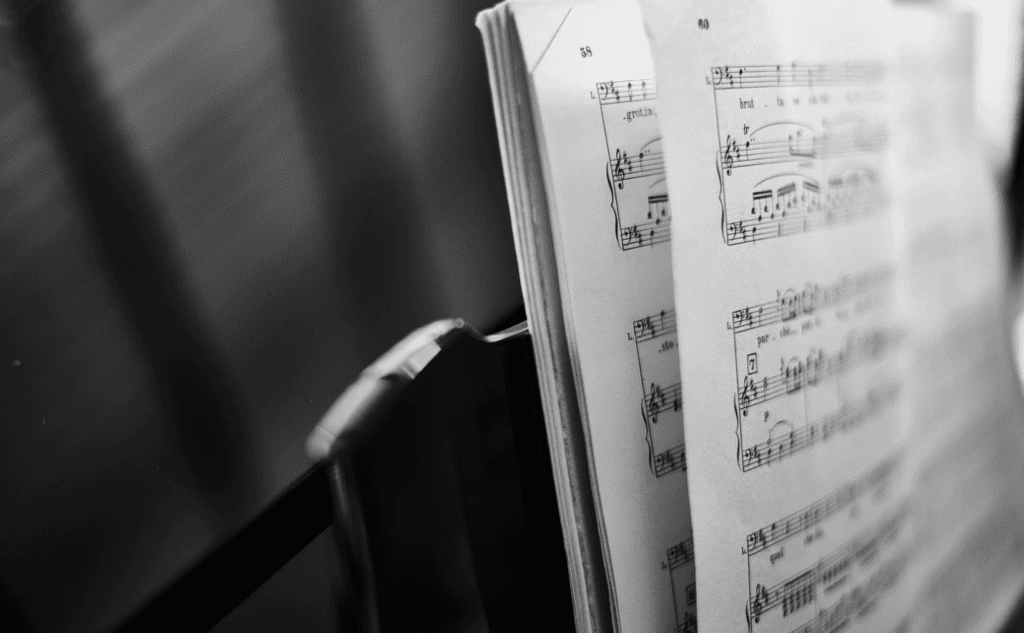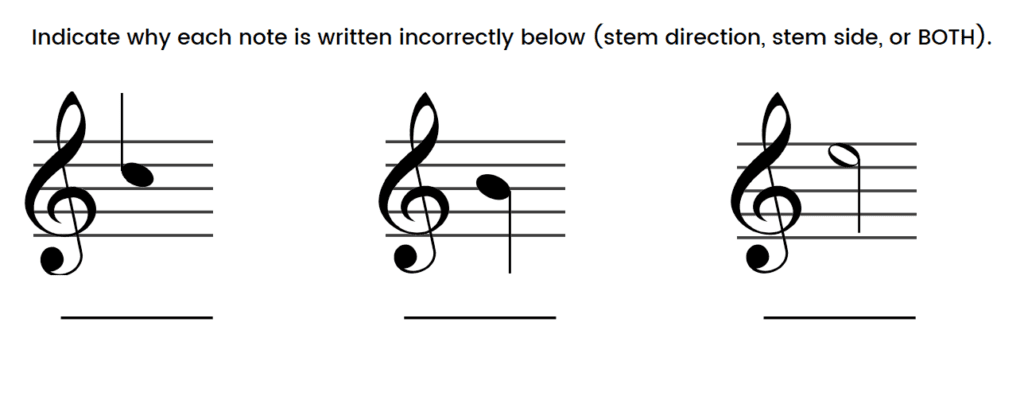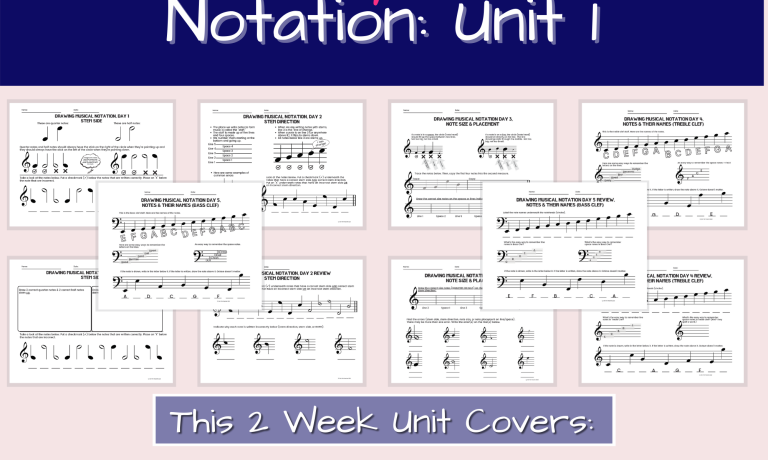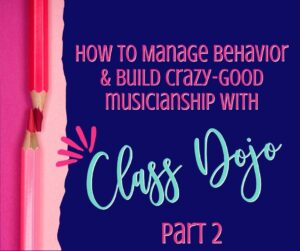I’ve said it before and I’ll say it again– composition is one of those topics that has never been my favorite thing to teach. So, why the heck would I write an entire blog post and develop an entire theory system around it?
Easy. Just because it sucks to teach drawing music notes to students, doesn’t mean it has to.

But it used to for me.
Soooooo I set out to figure out what are those things that students struggle with when it comes to basic notation. Here’s what I found:
- There isn’t usually enough focus on the basics.
- Note Size
- Note Direction
- Legibility
- Teachers try to dump notation in with composition–
- “Today we’re going to learn how to compose a rhythm in one measure. Oh, and by the way, here’s how you draw a quarter note.” No no no.
- We just plain ol’ forget to teach the basics!
I get it. We’re excited to teach rhythm and composition to our students, but drawing music notes, learning the technicalities of their position on the staff, how to identify errors- THAT is where the magic happens. Because when a student can do MORE right the first time, the more success they will feel. And if you’re still teaching notation and composition at the same time, your student will feel ALL kinds of stress.
Trust me. It’s like trying to write sentences before you’ve ever written a letter. Don’t do it. You know better!

Drawing Music Notes- So where do we start?
When I started teaching my middle schoolers beginning notation, I knew I had to teach them how to draw music notes step by step. The problem is, most composition sequences do one of two things.
They either skip over writing musical notation completely, or they teach it like this:
Here’s a picture of a treble clef. Trace it 5 times. Here’s a picture of a quarter note. Trace it 5 times. Yada yada yada.
Now, I’m not bashing on those materials (ok, maybe just a little bit), but your middle schoolers or high schoolers do NOT need to trace a note to see how to draw it. I get it, that’s what ALL beginning notation units look like, but what if they weren’t?
Here’s what I think…
What is more powerful, is to (of course!) give students opportunities to practice drawing music notes, but give them specifications for how they should look (stem direction, stem placement, notehead placement, lines/spaces etc). But don’t stop there and set up camp.
Give them the opportunity to observe errors, to correct given mistakes so that they can better understand the errors when they make it themselves. Appeal to their higher order problem-solving skills. It’s far more engaging than simply giving them a note to trace repeatedly. Drawing music notes does not need to be childish or “kiddy.”
Kids may do quickly by imitation, but they learn best by engaging with the idea authentically and working through problems.
Take a look at this example:

This appeals to a student’s higher-order thinking because they not only have to identify mistakes, they have to identify multiple mistakes. Why do we then teach students to write music notation like they’re kindergartners when, in reality, they’re 12-18 year olds?
I have no idea.

What’s the ideal sequence for how I should teaching musical notation to my students?
Here’s my sequence.
- Lesson 1: Identifying Stem Side When Notes Are Right-Side-Up and Upside-Down
- Students aren’t familiar with what we mean when we say “right-side-up” or “upside-down.” We need to teach them what that means.
- Lesson 2: Numbering Lines & Spaces of the Staff, “Line of Change,” Common Errors, and Error Detection
- Using a sequence that students already know (1,2,3,4,5) allows students to chunk their understanding.
- Lesson 3: Notehead Size, Tracing, and Drawing Notes on the Staff
- Utilize tracing, but only in meaningful ways to get students used to identifying errors.
- Lesson 4: Learning Letter Names of Notes on Treble Clef, How to Remember Note Names, Writing Notes on Treble Clef Staff
- Make sure students are familiar with the staff, note placement, centering and legibility before you add in the complexity of note names. It just gives students an advantage to only having to learn one thing at a time (and increase your teaching success rate with them right off the bat!)
- Lesson 5: Learning Letter Names of Notes on Bass Clef, How to Remember Note Names, Writing Notes on Bass Clef Staff
- I’m a HUGE fan of mnemonics (brain-triggers) that help students remember note names. Make sure they have lots of triggers especially differentiating between treble and bass clef when they’re learning about drawing music notes.
Why do I teach notes on the staff last?
I’ve met many wonderful, beautiful music teachers who think at the beginning of the year is the time to teach their students the names of the notes on the staff. What they don’t realize, is that their students don’t know what a note or a staff is.
I want my students to know and understand what a note is and what it looks like, before I try to teach them that there’s a specific place it needs to be on the staff. It seems easy enough, but trust me, I did it wrong for SO long. And here’s the thing: we all know when our students get overwhelmed, it takes 10x as long to get through to them than if we taught in a logical, sequential order to begin with.
Now what?
Well, I’ve spent lots of time thinking through this for you. If you’re interested in saving yourself some time, here’s a link to my pre-made musical notation unit that I use with my beginners every year:
Want a freebie?
Here’s a special thank you from me to you for stopping by my blog: If you’d like a FREE copy of Lesson 1 of “Writing Music Notation” to try with your students:
- CLICK HERE go to my TeachersPayTeachers Store
- Click “Follow Me” to get occasional store updates and notifications of product sales.
- Send me an email letting me know you’re following my TpT channel and would like your Lesson 1 Freebie— shetheteacherblog@gmail.com
- I’ll send you a copy of Lesson 1 for FREE!

I hope this was helpful! Writing music notation and drawing music notes doesn’t need to be as hard (or as easy) as we sometimes make it.
If you’d like to check out my blog about my Rhythm Notation Unit, click the button below!
Wishing you and your students all the best as you begin discovering musical notation by drawing music notes in a more advanced way.






